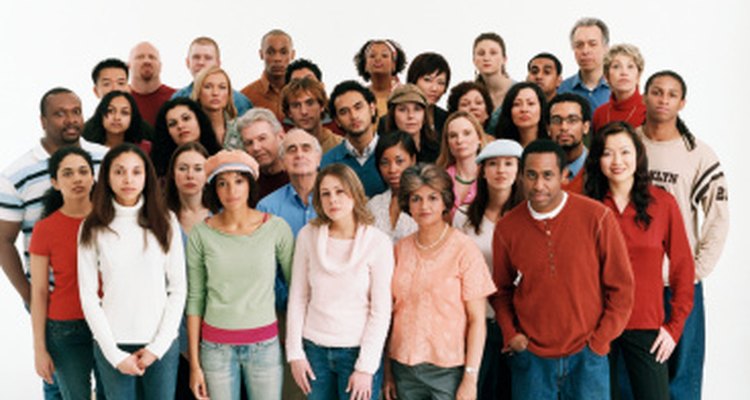
The concept of symmetry refers to balance or similarity between two sides, while asymmetry refers to a lack of balance. In social relationships, humans have a tendency toward symmetry or "homophily," which the Harvard Kennedy School defines as "the sociological phenomenon that people are more likely to form friends with others who are like them in race/ethnicity, social class, education, age, etc." When vast differences exist between friends, spouses or life partners or even business associates, the relationship might be defined as asymmetrical.
Power

Any relationship or social situation in which one person or group has authority over another is considered to be asymmetrical because the balance of power is more or less one-sided. The teacher/student relationship, especially in the early grades, is one example. Others include the parent/child, boss/employee and guard/prisoner relationships. In Western culture, the doctor/patient relationship can sometimes be perceived as asymmetrical, although patient rights guarantee that in actuality there is no imbalance..
Age

In Western culture, people tend to form relationships with those close to them in chronological age. A 25-year-old woman and her 68-year-old life partner are in an asymmetrical relationship in regard to age. When a man in his early 30s marries a 50-year-old woman, the relationship is asymmetrical as well as atypical in American society.
Social Status

A world-renowned neurosurgeon at a prestigious teaching hospital is likely to spend her leisure time socializing with other professionals rather than with a member of the hospital's janitorial staff, even though both might share an interest in art or rock climbing. If the surgeon strikes up a close friendship with the janitor, that relationship is considered asymmetrical in terms of social status (and very likely education and income, as well).
Education
Similarly, a marriage between a man with a doctorate and a woman who left school and entered the workforce after the 10th grade creates an asymmetrical social relationship because of the wide gap in their levels of education. If the highly educated spouse is also significantly older than the less educated spouse, the resulting relationship is asymmetrical on multiple levels.
Considerations
The symmetry or asymmetry of a relationship is not always easily defined, as multiple factors can come into play. For example, if the wife in the above example left school and entered the workforce because she is a brilliant, self-motivated autodidact (self-teacher) who has become fabulously successful in a respected commercial endeavor, the relationship is asymmetrical in terms of formal education, but symmetrical in terms of social status. Furthermore, lines between symmetrical and asymmetrical relationships blur when it comes to professions that are high in social status yet moderate to low in terms of income.
Related Articles

Importance of the Brother Sister Bond

Types of Jealousy

How Relationships Can Cause Depression

Types of Conflict in Marriage

Positive Effects of Dating for Teenagers

Communication Between Older & Younger ...

Aggressive Behavior in Adults

7 Types of Conflict

List of Human Characteristics of ...

Why Is International Friendship Day ...

What Causes People to Commit Adultery?

The Norwegian Dating Culture

The Effects of Lack of Communication in ...

What Effects Can Stress Have on a ...

Psychological Effects of Fatherlessness

Responsibilities of a Wife to Her ...

What Are the Effects of High School ...

The Effects of a Poor Father-Daughter ...

What Is a First-Degree Relative?

What Is Fraternal Love?
Writer Bio
Teressa Rose Ezell has been writing professionally since 2010. She holds a Bachelor of Arts in sociology and English from the University of Arkansas at Little Rock and is a Master of Fine Arts in writing candidate at Lindenwood University. Current projects include a short-story series and a collection of creative nonfiction essays.
Photo Credits
Digital Vision./Digital Vision/Getty Images